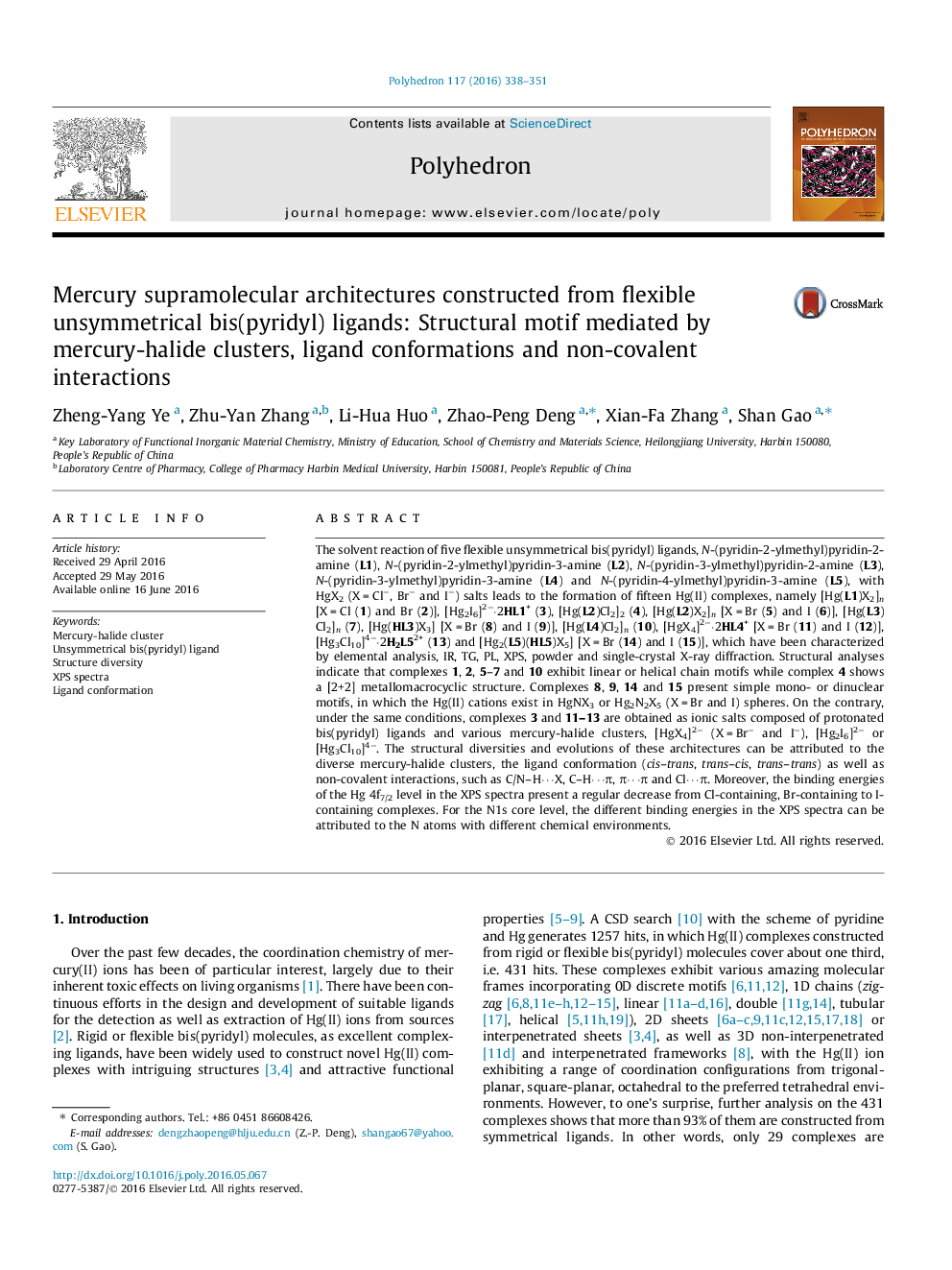| Article ID | Journal | Published Year | Pages | File Type |
|---|---|---|---|---|
| 1336214 | Polyhedron | 2016 | 14 Pages |
The solvent reaction of five flexible unsymmetrical bis(pyridyl) ligands, N-(pyridin-2-ylmethyl)pyridin-2-amine (L1), N-(pyridin-2-ylmethyl)pyridin-3-amine (L2), N-(pyridin-3-ylmethyl)pyridin-2-amine (L3), N-(pyridin-3-ylmethyl)pyridin-3-amine (L4) and N-(pyridin-4-ylmethyl)pyridin-3-amine (L5), with HgX2 (X = Cl−, Br− and I−) salts leads to the formation of fifteen Hg(II) complexes, namely [Hg(L1)X2]n [X = Cl (1) and Br (2)], [Hg2I6]2−·2HL1+ (3), [Hg(L2)Cl2]2 (4), [Hg(L2)X2]n [X = Br (5) and I (6)], [Hg(L3)Cl2]n (7), [Hg(HL3)X3] [X = Br (8) and I (9)], [Hg(L4)Cl2]n (10), [HgX4]2−·2HL4+ [X = Br (11) and I (12)], [Hg3Cl10]4−·2H2L52+ (13) and [Hg2(L5)(HL5)X5] [X = Br (14) and I (15)], which have been characterized by elemental analysis, IR, TG, PL, XPS, powder and single-crystal X-ray diffraction. Structural analyses indicate that complexes 1, 2, 5–7 and 10 exhibit linear or helical chain motifs while complex 4 shows a [2+2] metallomacrocyclic structure. Complexes 8, 9, 14 and 15 present simple mono- or dinuclear motifs, in which the Hg(II) cations exist in HgNX3 or Hg2N2X5 (X = Br and I) spheres. On the contrary, under the same conditions, complexes 3 and 11–13 are obtained as ionic salts composed of protonated bis(pyridyl) ligands and various mercury-halide clusters, [HgX4]2− (X = Br− and I−), [Hg2I6]2− or [Hg3Cl10]4−. The structural diversities and evolutions of these architectures can be attributed to the diverse mercury-halide clusters, the ligand conformation (cis–trans, trans–cis, trans–trans) as well as non-covalent interactions, such as C/N–H⋯X, C–H⋯π, π⋯π and Cl⋯π. Moreover, the binding energies of the Hg 4f7/2 level in the XPS spectra present a regular decrease from Cl-containing, Br-containing to I-containing complexes. For the N1s core level, the different binding energies in the XPS spectra can be attributed to the N atoms with different chemical environments.
Graphical abstractThe solvent reaction of five flexible unsymmetrical bis(pyridyl) ligands with HgX2 (X = Cl−, Br− and I−) salts leads to the formation of fifteen Hg(II) complexes. The different N1s binding energies can be attributed to N atoms with different chemical environments.Figure optionsDownload full-size imageDownload as PowerPoint slide
